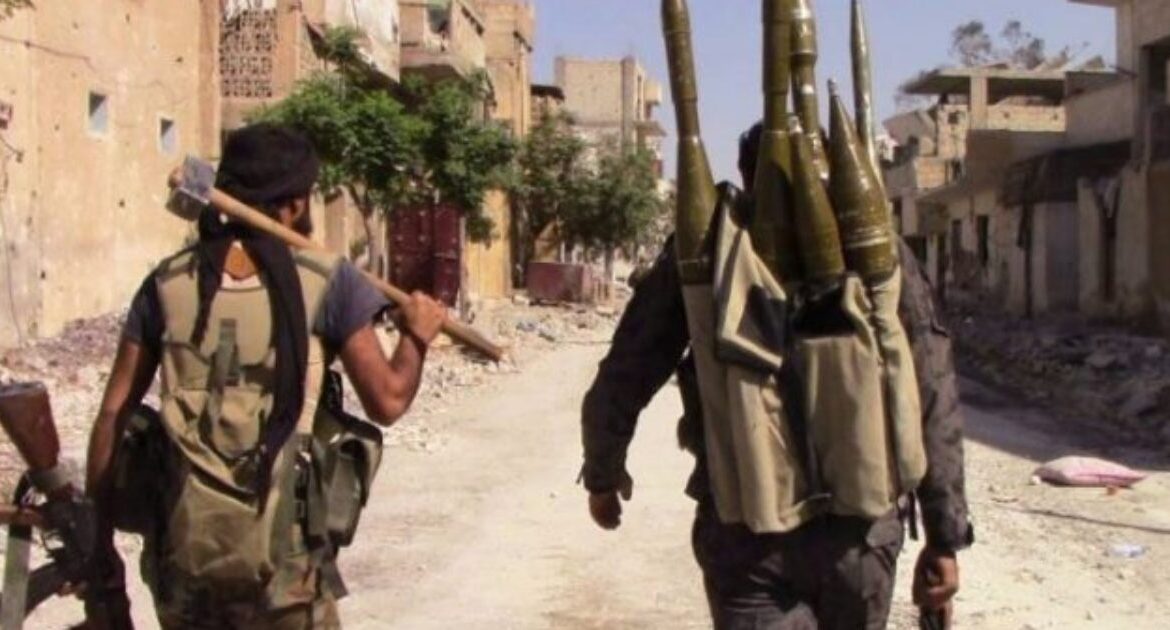
Syria’s ISIS-Aligned Government May Join the U.S.-Led Coalition Against ISIS – Kurds Skeptical


Syria’s new leader, Ahmed al-Sharaa (also known as Abu Mohammed al-Julani), is scheduled to visit Washington on November 10, 2025, where he is expected to formally sign an agreement for Syria to join the U.S.-led Global Coalition to Defeat ISIS. The visit will mark the first time a Syrian head of state has ever been received at the White House, a move that many observers find deeply counterintuitive given that al-Sharaa’s regime is composed of extremist factions linked to both al-Qaeda and ISIS.
“The U.S. had a five-million-dollar bounty on al-Julani’s head,” said Charbel, a Syrian Christian who fought ISIS for four years alongside the Kurdish-led Syrian Democratic Forces (SDF). “And now he is invited to the White House?” he asked, visibly shaken. “How can this be?”
Al-Sharaa, who led a coalition of Islamist groups that overthrew Bashar al-Assad’s government in late 2024, has been designated a Specially Designated Global Terrorist since 2013, and his organization, Hayat Tahrir al-Sham (HTS), remained on the U.S. Foreign Terrorist Organization list until July 2025.
For the Kurds and Christians of the semi-autonomous region of Rojava, northern Syria, Washington’s outreach to al-Julani feels like another betrayal. “Yes, he wants to join the coalition because of pressure from the Americans,” remarked one Kurdish woman in Qamishli, “but how will he fight ISIS, his own people?” A man who fought ISIS in both Iraq and Syria, and watched several of his close friends die on the battlefield, laughed bitterly. “That would be strange,” he said. “Julani’s group joining the coalition to fight ISIS—oh my goodness. I have no idea how that would work.”
Another Kurdish veteran put it even more succinctly: “Al-Julani is ISIS. How can he join the coalition?”
Charbel expressed what many Kurds, Christians, and other minorities feel about the al-Julani government: “This government is not good. It’s not safe for anyone. No one can live there.” By “there,” he meant areas now controlled by the Damascus regime, a government that has integrated former al-Qaeda and ISIS affiliates into its ranks. For many observers, it represents jihadists rebranded as statesmen.
In March 2025, more than 800 civilians, mostly from the Alawite minority, were massacred across Latakia, Tartus, and Hama by militias aligned with the new government, including factions of the Syrian National Army. Weeks later, hundreds of Druze civilians were killed in similar sectarian attacks. In both cases, it was difficult to distinguish whether the perpetrators were government troops, ISIS cells, or extremist militias, the lines between them have all but disappeared.
Rojava, the Kurdish-led autonomous zone, remains relatively safe under the protection of the Syrian Democratic Forces (SDF) and U.S. troops, but ISIS-linked attacks are rising, especially in Deir ez-Zor and the Raqqa countryside, where sleeper cells are increasingly active. Though ISIS no longer controls territory, an estimated 1,500 to 3,000 fighters in Iraq and Syria continue operating as a highly adaptable insurgency targeting soldiers, civilians, and infrastructure.
Their tactics include assassinations, ambushes, and improvised explosive devices aimed at destabilizing both SDF- and government-held areas. The threat is compounded by more than 8,000 ISIS detainees and 38,000 relatives held in overcrowded camps like al-Hol and Roj, where radicalization runs rampant.

In 2025 alone, ISIS carried out 117 attacks in northeast Syria, already surpassing the total for 2024. The surge coincided with the U.S. drawdown from 2,000 to roughly 700 troops, weakening coordination and intelligence sharing. Major attacks included a June suicide bombing at a Greek Orthodox church in Damascus that killed 25 and injured 63, an IED blast in Sweida’s al-Safa desert that killed seven Syrian soldiers, and an axe attack during Babylonian-Assyrian New Year celebrations in Duhok, Iraq. In January, two ISIS gunmen also ambushed and killed four SDF fighters in Deir ez-Zor.
Digitally, ISIS continues to radicalize youth through encrypted social media and online propaganda, increasingly recruiting minors across Europe. Teenagers as young as 14 have been arrested for ISIS-inspired plots, showing how quickly online radicalization now occurs, often without detection. The group also uses cryptocurrencies and dark web platforms to finance its operations, allowing it to evade traditional oversight and traceability.
Globally, ISIS has evolved into a decentralized network. Its affiliates are expanding in Africa, Afghanistan, and Central Asia, with IS-Khorasan emerging as the most aggressive branch. Across Mali, Niger, and Burkina Faso, ISIS’s Sahel Province commands up to 3,000 fighters, while its Somali and Lake Chad Basin factions are growing rapidly.
As the U.S. and Europe scale back funding and military presence, jihadist groups are filling the gaps, while Moscow and Beijing exploit the instability to expand their influence. Analysts warn that neglecting counterterrorism in favor of geopolitical rivalry risks enabling ISIS’s resurgence, particularly in fragile regions like Syria and the Sahel.
The prospect of al-Julani’s regime joining the U.S.-led coalition has thus left many Syrians, especially Kurds and Christians, questioning how the West can justify legitimizing a man who once embodied the very terrorism the coalition was created to defeat.

The post Syria’s ISIS-Aligned Government May Join the U.S.-Led Coalition Against ISIS – Kurds Skeptical appeared first on The Gateway Pundit.
